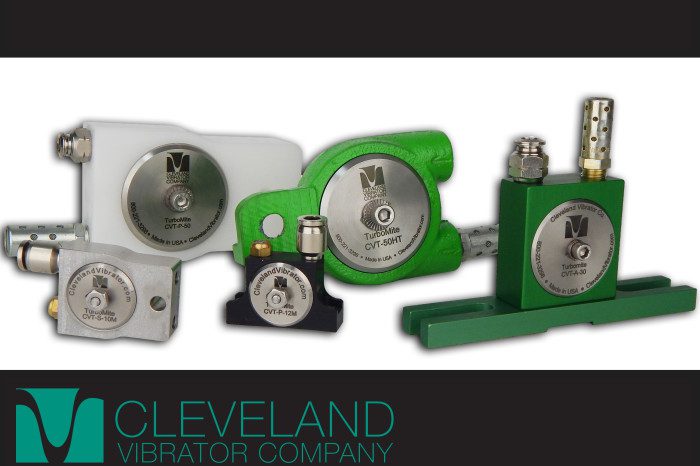February 27, 1958
Engineering Department
Fafnir Bearing Company
New Britain, Connecticut
Gentlemen:
Submitted herewith is a sketch of a proposed bearing application. This device is an industrial vibrator for use in handling sand, dusts and powders. The use of an eccentrically loaded turbine to product vibrations is novel to my knowledge and it produces some novel bearing problems. The device is designed to produce vibration, an action which is usually very guarded. A model of this device has been made and tested. It has the nominal dimensions shown and runs approximately………Yours very truly,
The Cleveland Vibrator Co.
Frank K. B…….
Professional Engineering Consultant
Cleveland Vibrator is currently looking to add to our Sales Team, in preparation for this change, the company is working through some old files. The engineering piece of The Purge was to go through some cabinets and see what needed to be saved and what could move on to the recycling bin. Amongst the musty folders was one marked “Turbine Vibrator Development – 1954.” Inside that folder are several interesting documents including a letter to the engineering department at Fafnir Bearing, part of which I inserted earlier in this Blog. I’ve been working on adding turbine vibrators to the Cleveland Vibrator product line for several years now. It looks like the company had done a pretty fair amount of work well in advance of my efforts!
Generally speaking there are two categories of turbines, impulse and reaction. For the impulse turbine, the impeller rotates due to a fluid hitting the “buckets” on the turbine wheel. With the reaction turbine, rotation is due to the “reaction” of the fluid entering or leaving the turbine. The impulse design is what Cleveland Vibrator uses with our turbines and to my knowledge that’s pretty standard across the industry. A number of years ago I attempted a vibrator using the reaction concept. I think most of us have seen the rotating water sprinkler where two streams of water exit the sprinkler in opposite directions causing the sprinkler to spin and distribute the water in a circular pattern. I dubbed my design “the spinner” and worked up a concept and the company actually built a prototype and we ran some tests. For the volume of air required, the rotational speed wasn’t much to get too excited about and I moved on from that concept. Interestingly, one of the sketches in the 1954 folder shows a design concept where input air was directed through a shaft and into some sort of weighted arm where the air exited and caused rotation. It looks like the results were close to what they had expected but it appears the designs never moved ahead. It’s a bit hard to get too excited about an estimated force output of 150 pounds of force at 1,000 rpm, particularly for physically large unit.
As I’ve talked about in past blogs, for rotating vibrators, which include ball vibrators, turbine vibrators and even our line of Rotary Electric vibrators, the force output of the unit can be calculated using the equation F= 2.84E-5 x UB x rpm2 . Where the “UB”, unbalanced value, is unique to the vibrator, the product of the mass of the off center weight multiplied by the distance between the center of that rotating mass to the center of rotation. Increase the rotational speed and you get a significant return in the increase of the force output of that vibrator.
In the design of a turbine vibrator there a number of parameters to manipulate, these parameters impact each other and work together to influence the final performance of the unit as well as its future applications. Larger diameter impellers generally result in lower rotational speeds yet have the capacity to have larger unbalanced values. Higher speeds result in higher force outputs, given the same UB value, but as has been stated before, higher frequency vibrators produce smaller displacements in the items to which they’re mounted. Some applications may benefit from higher frequency vibration while others have just the opposite result.
Turbine vibrators are often used as bin activators, to assist in moving material out of a bin or hopper. For some materials and applications The Cleveland Vibrator Company has seen that high frequency small displacement vibrators will actually pack material in a hopper and not aid in its flow. Sometimes that high frequency “tickle” of vibration isn’t the best option to solve the customer’s problem, yet for others it’s just what is needed. If there’s a question regarding Bin Vibrators, our Sales Team can certainly help sort things out and discuss possible options. Whether that’s a turbine vibrator, ball vibrator, continuously vibrating pneumatic piston vibrator (VMS or VMSAC) or the timed hammering of the Single Impact (SI) vibrator, there are options and our Sales Team can assist you in the proper selection of a vibrator.
In the engineering area, I’ll continue to work on my designs and prototype units in an effort to expand Cleveland Vibrator’s product offerings and in turn the solutions we can offer to our customers. I hope to see a couple of larger force output units moving from the development phase to the production phase sometime this year. Just trying to build on the work done in 1954 and keep Cleveland Vibrator moving and shaking!
Follow us:
Share this blog post:



One Response to Turbine Vibrators, Views from the Way Back Machine…